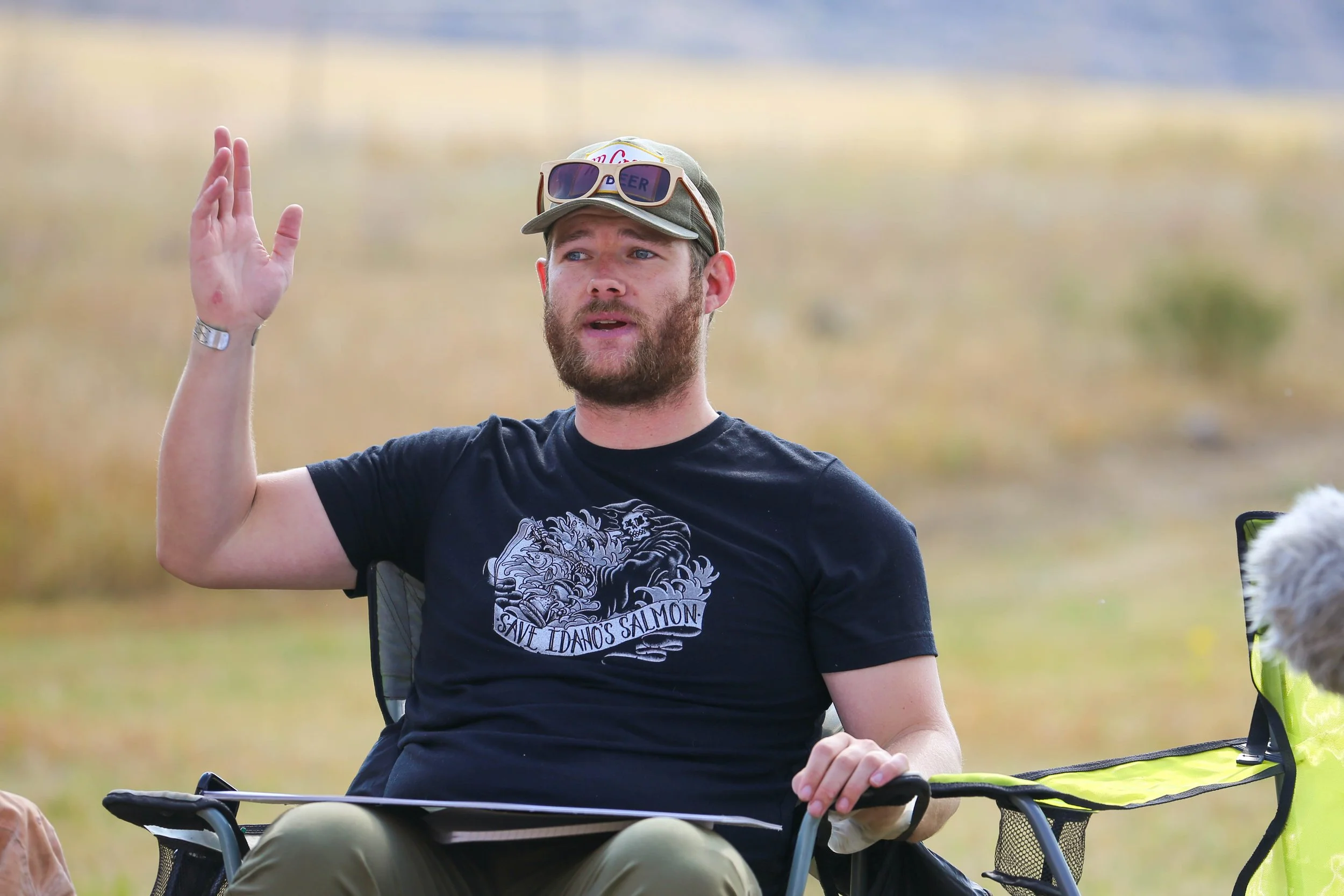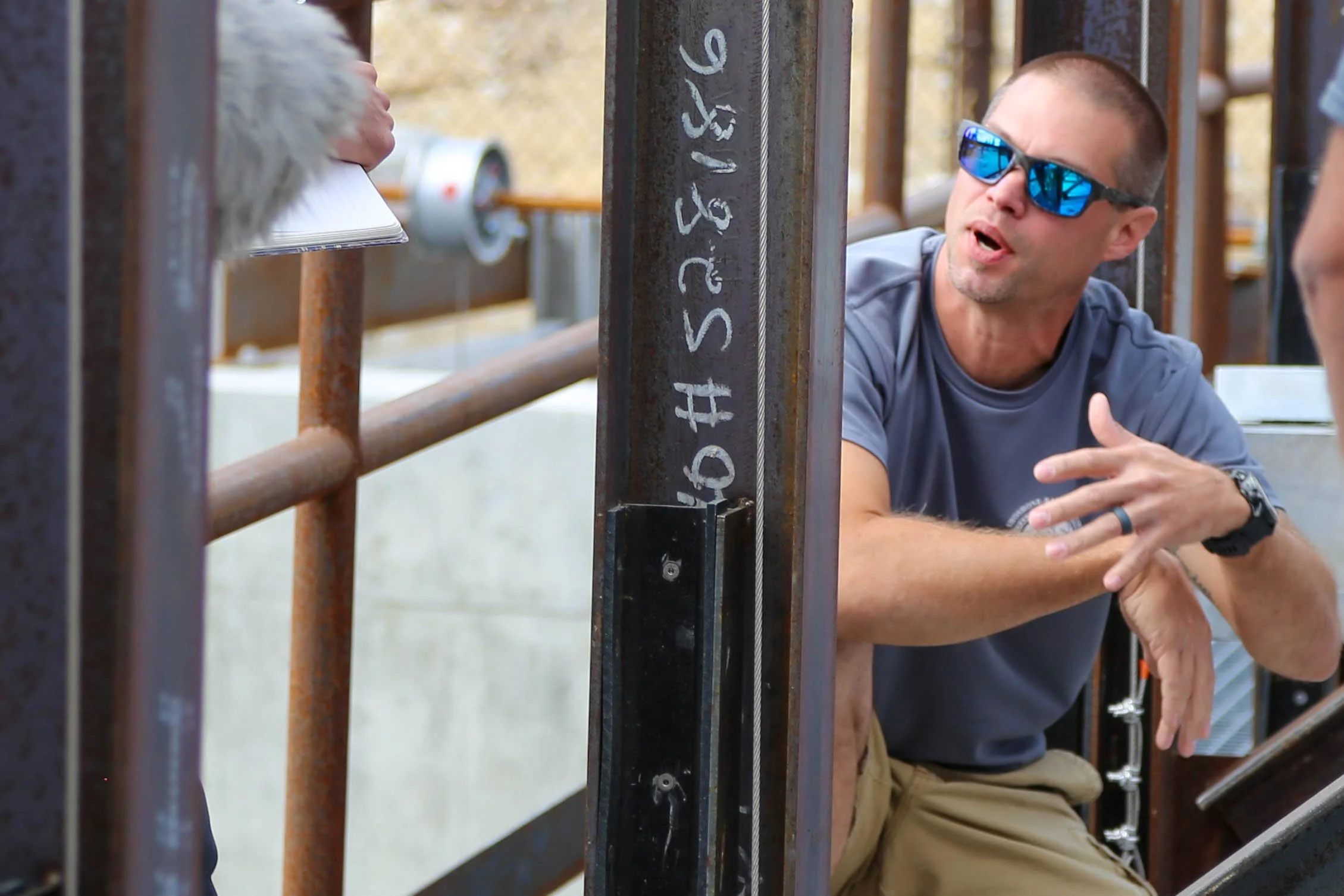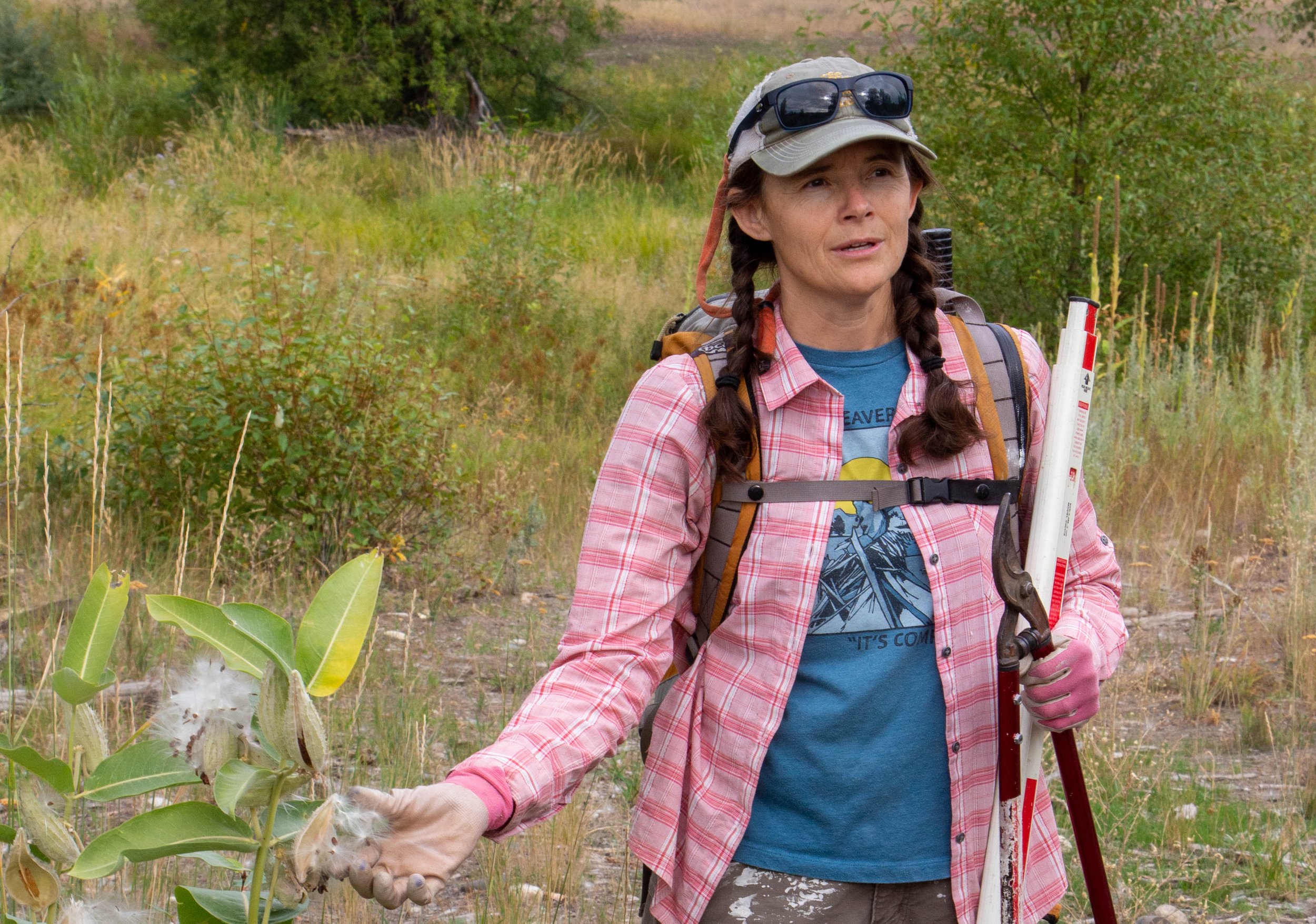Amanda Gardner
Executive Director, White Clouds Preserve
Clayton, Idaho
9/11/21
Hiding from the sun, sunglasses cover a swath of Amanda Gardner’s face as she talks about the White Clouds Preserve (WCP), a budding nonprofit in central Idaho based around a 432-acre former cattle ranch. Amanda is the co-executive director of the organization, and since April of 2020, has lived on the preserve full-time. WCP’s mission is to “foster stewardship, education, and community,” Amanda says, while trying to wrangle her terrier on the lawn next to the three-story chalet on the property. Their most recent project has been restoring riparian habitat on the property – which was degraded by 100 years of ranching – to improve salmon spawning habitat. WCP has hired a local habitat restoration company to plant native species to provide shade for the overexposed river, serving the double purpose of helping the environment and supporting the local economy.
White Clouds Preserve’s lodge has floor-to-ceiling windows overlooking the East Fork of the Salmon River and provides housing for AmeriCorps volunteers and veterans in recreational therapy programs. Coordinating reservations and programs for the facilities comprises much of what Amanda does, and looking forward, the “hope is to be a hub,” from where more volunteer groups can “work out of, and go in different directions in central Idaho.”
By Kevin Faeustle






